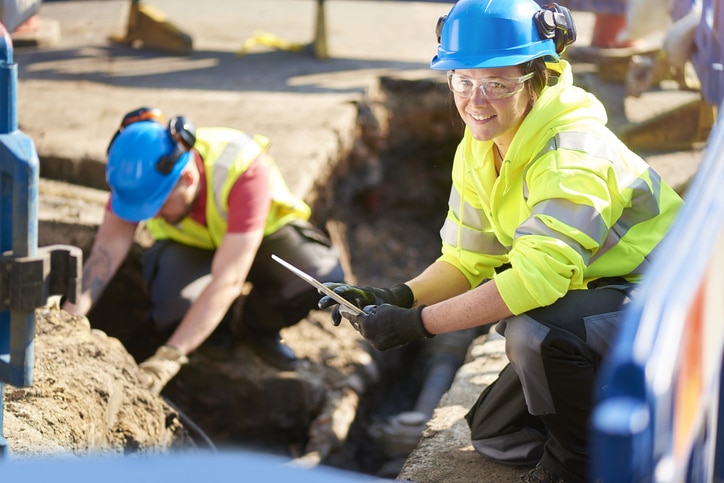How Utility Service Companies Combat the Dangers of Drilling Near Underground Lines
When digging trenches or getting ready to lay down a new utility line, utility services need to seriously consider the maze of underground cables you may be digging into or near. Damaging any other utility while trying to lay down your own can get extremely costly as you will be held directly responsible for the loss.
Installing underground utility lines via horizontal directional drilling (HDD) is excellent for avoiding the maze of underground cables underneath and breaking the current infrastructure. The utility lines also present their own sets of challenges that need to be considered.
Let’s look at the dangers hitting existing utility lines can pose and what can be done to avoid it.
Dangers of Drilling Through Underground Utility Lines
One of the most prevalent issues underground utility services have to face is hitting electrical lines. If the drill gets in contact with the electrical wires and somehow damages the insulation, it could electrocute the operator.
Hitting a water or sewage line presents environmental and hygienic risks, respectively. If the sewage is an industrial waste line, the chemicals can start seeping into the surrounding areas, adversely impacting the whole ecosystem.
If the drill bit gets in contact with a gas line, there is a high risk of explosion. The drill may cause leaks at the worksite or down the line into the surrounding areas. All it takes to ignite natural gas is a spark, and sparks can quickly occur at construction sites and homes.
The same can happen with a steam line. The rapidly escaping steam can not only burn equipment and operators, but it can also expand rapidly to cause an explosion.
Safe operations through planning and stratification are vital to ensuring that the underground lines remain untouched. Horizontal directional drilling combined with proper planning and the right control must be implemented at all times to ensure adequate operator and worker safety.
Verifying Underground Utility Lines
Expert underground utility service providers such as those at Americom make a point of verifying whether there are any underground lines in their drilling path with the help of surface markings.
Undocumented markings, poor installation, or a different position than what was originally planned (because of ground resettling) warrant the use of specific inspection and verification methods. These include:
- Conducting a thorough visual inspection of the planned digging path
- Reviewing drawings and maps, contacting utility companies, verifying underground utility locations by opening manholes, and/or comparing surface markings.
- Identify line paths by calling authorities and sharing your drill path with them.
- Ensure the right digging technique is being used
- Train horizontal directional drilling machine operations to communicate their progress and to identify potential threats beforehand.
- Ensure PPE is being used (29 CFR Part 1926 Subpart E).
You also need to comply with the local, state, and federal regulations. If you’d like to learn more about how you can navigate the dangers of drilling into a maze of underground cables or how utility service companies can help you, call Americom today. Let us help you create a robust infrastructure and minimize liabilities!




